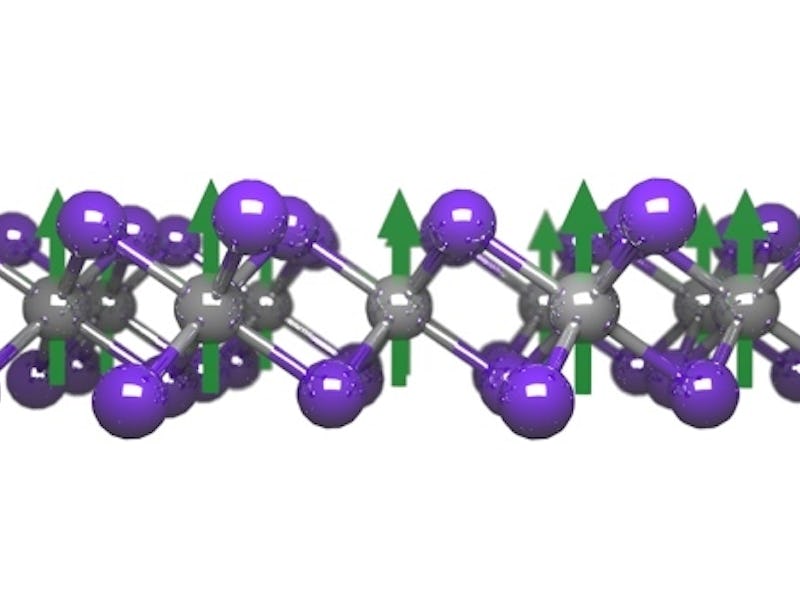Scientists Have Created the First Ever 2-D Magnet
It's only one atom thick.

A pair of research scientists announced in the most recent issue of Nature that they’ve engineered the very first two-dimensional magnet. It has huge implications for computing technologies.
Pablo Jarillo-Herrero and Xiaodong Xu teamed up and pooled their research in 2016 after discovering that they had each been working independently toward the same goal. That partnership paid off, with their 2-D magnet announcement standing out as the first of its kind.
The magnet is made of a compound called chromium triiodide, which Jarillo-Herrero and Xu found retained its magnetism even at wildly thin dimensions. (The magnet isn’t actually 2-D, it’s one atom thick, but that’s about as 2-D as it gets.) That’s because chromium triiodide is a ferromagnet, a metal that permanently generates a magnetic field because of the way its electrons spin.
“Does the superconductor destroy the ferromagnet, or does the ferromagnet destroy the superconductor?” Jarillo-Herrero says. “It was just not possible to do this experiment before.”
One catch? The substance must be kept at -228 degrees Celcius in order to work as intended, which sounds pretty cold but is actually fairly warm in relation to similar substances. Though it is a long way away from living room temperatures.
In the near future, Jarillo-Herrero and Xu hope to test their new technology with existing 2-D superconductors and other components to figure out how it can be best integrated into computers to help create smaller and more powerful machines as well as improvements to existing technologies.